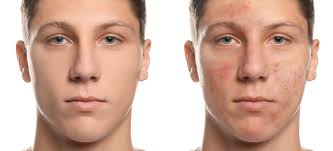Small bumps on the face can be annoying, stubborn, and difficult to manage. These bumps may appear as tiny whiteheads, clogged pores, milia, or early signs of acne. Many individuals struggle to understand how to get rid of small bumps on face because the causes vary widely. Along with these bumps, pimple marks often remain long after the breakout heals, creating uneven texture and dark spots. If you’ve been searching for solutions, this comprehensive guide will help you learn how to get rid of little bumps on face, why they form, and how to get rid of pimple marks effectively.
Why Small Bumps Form on the Face
To successfully treat bumps, it’s important to identify what type of bumps you’re dealing with. One of the most common types is closed comedones, which occur when pores become clogged with oil and dead skin cells. These appear as tiny white bumps under the skin. Another common cause is milia—small, hard white bumps that form when keratin becomes trapped beneath the surface. Fungal acne is another reason people experience small, uniform bumps, usually itchy and triggered by yeast overgrowth rather than bacteria. Some bumps are simply due to texture buildup, caused by dehydration, dead skin, or lack of exfoliation. Irritation or allergic reactions from products, fragrances, or harsh ingredients can also lead to bumps. Once you identify the cause, you can decide the best method for how to get rid of small bumps on face.
How to Get Rid of Small Bumps on Face: Effective Treatments
If you’re looking for reliable ways to smooth your skin, these science-backed solutions help reduce bumps and prevent future ones. Using a salicylic acid cleanser is one of the most effective steps in learning how to get rid of little bumps on face. Salicylic acid, a beta-hydroxy acid, penetrates deep into pores, removes oil buildup, and dissolves dead skin cells. It reduces whiteheads and unclogs pores, helping the skin look smoother over time. Gentle exfoliation is another powerful method. AHAs like glycolic acid and lactic acid exfoliate the surface of the skin, addressing texture and roughness, while BHAs target clogged pores. Enzyme exfoliants made from papaya or pineapple are ideal for sensitive skin, offering a mild yet effective exfoliating action. Niacinamide is excellent for calming inflammation and reducing oil production. It helps shrink pores, smooth texture, and balance the skin barrier. A serum containing 2%–10% niacinamide can be used daily to support clearer, smoother skin. Retinoids are also incredibly effective for long-term smoothing. They speed up cell turnover and prevent clogged pores, making them perfect for minimizing bumps and texture. Beginners can start with adapalene, a gentle retinoid that works well for small bumps caused by pore congestion. If the bumps are due to fungal acne, traditional acne treatments may not work. Anti-fungal ingredients like ketoconazole or zinc pyrithione are more effective. Avoiding heavy creams and using lightweight, non-comedogenic products are essential steps when figuring out how to get rid of little bumps on face caused by yeast imbalance. Moisturizing is equally important. Even oily or bumpy skin needs hydration. Use gel-based, oil-free moisturizers to hydrate without clogging pores. Lastly, avoid picking at your skin. Touching, squeezing, or scratching bumps can lead to irritation, infection, and long-lasting marks.
Natural Remedies for Small Bumps
If you prefer natural remedies, there are gentle options that can improve bumps without harsh ingredients. Aloe vera soothes irritated skin, moisturizes lightly, and reduces redness. Honey has antibacterial and healing properties, making it a great option for calming bumps. Green tea works as a natural anti-inflammatory remedy and can be used as a toner to reduce oil. Diluted tea tree oil can help clear bumps caused by bacteria, though it must be applied sparingly to avoid irritation. These remedies are excellent additions to your routine when learning how to get rid of small bumps on face naturally.
How to Get Rid of Pimple Marks: Remove Dark Spots and Scars
Even after the bumps disappear, pimple marks often remain. Understanding how to get rid of pimple marks is crucial for achieving smooth, even-toned skin. Pimple marks usually appear as dark spots (hyperpigmentation), red marks (post-inflammatory erythema), or indentations (atrophic scars). Dark spots respond well to vitamin C, one of the best brightening ingredients. Vitamin C reduces pigmentation, fades marks, and boosts collagen. Niacinamide reduces inflammation and helps fade both redness and pigmentation over time, making it a great ingredient for sensitive skin. AHAs like glycolic acid and lactic acid exfoliate the skin gently, helping lift away pigmented cells and smooth rough texture, making them perfect for those learning how to get rid of pimple marks with chemical exfoliation. Retinoids, as mentioned earlier, speed up cell turnover and help generate new skin, gradually fading marks and smoothing scars. For deeper marks that do not fade with at-home treatments, dermatologists may recommend chemical peels, microneedling, or laser treatments. These professional options are especially effective for stubborn pigmentation or indented scars.
Preventing New Bumps and Marks
To maintain smooth and clear skin, prevention is key. Wash your face twice a day with a gentle cleanser. Remove makeup completely before bed. Avoid heavy, pore-clogging creams and always choose non-comedogenic skincare products. Change pillowcases weekly and clean makeup brushes regularly to avoid bacterial buildup. Protect your skin from the sun every day. Sunscreen is one of the most important steps, especially when treating pimple marks, because sun exposure makes dark spots darker and slows down healing. Also, stay hydrated, eat a balanced diet, and limit sugary and greasy foods that trigger breakouts for some people. Consistency is essential. Skin improvements take time, and sticking to a routine is the best way to maintain the results of all the strategies you learn for how to get rid of small bumps on face and how to get rid of pimple marks.
When to See a Dermatologist
If bumps persist after 6–8 weeks of consistent care or if pimple marks turn into deeper scars, a dermatologist can provide customized treatment. Prescription retinoids, targeted creams, or in-office procedures can deliver faster, more dramatic results.
Conclusion
Understanding how to get rid of little bumps on face, learning the right ingredients, and knowing how to get rid of pimple marks will help you achieve smooth, clear, glowing skin. Whether your bumps come from clogged pores, dryness, irritation, or fungal imbalance, the right routine can make a huge difference. Combine effective treatments, natural remedies, and good daily habits to keep your skin healthy and smooth. And with consistent care, you’ll confidently handle how to get rid of little bumps on face whenever they appear.







